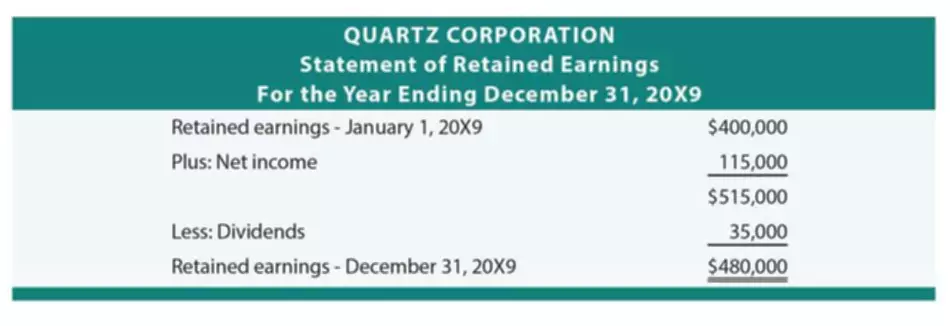Content
The baseline acts as a peg for the other figures while calculating percentages. For example, in this illustration, the year 2012 is chosen as a representative year of the firm’s activity and is therefore chosen as the base. The Comparative Income Statement is drawn on the same principle as the Horizontal Balance Sheet. There are columns, as in a comparative balance sheet, to show the amount of income and expenditure for two years in or more along with the increase or decrease in amounts as also percentage increases or decreases.
- Generally accepted accounting principles are based on the consistency and comparability of financial statements.
- In this way horizontal and vertical analysis helps to analyze the trend of a company and the income statement based on the total revenue.
- For this example, the analysis will be carried out on the data reported for 2021.
- In contrast, the process is practically the same for the balance sheet, but there is the added option of using “Total Liabilities” instead of “Total Assets”.
This analysis makes it easier to compare the financial statements of one company with another and across the companies as one can see the relative proportion of accounts. The changes may be expressed in absolute amounts or percentages (Smart, Megginson, & Gitman, 2007). The data may be presented for two years or for a number of successive years so as to examine the trend. Even though vertical analysis is a statement comparison within the same year, MT can use information from the prior year’s vertical analysis to make sure the business is operating as expected. For example, unearned revenues increased from the prior year to the current year and made up a larger portion of total liabilities and shareholders’ equity. This could be due to many factors, and Mistborn Trading will need to examine this further to see why this change has occurred. Horizontal analysis typically shows the changes from the base period in dollar and percentage.
Other uses and benefits of a vertical analysis
The authors and reviewers work in the sales, marketing, legal, and finance departments. All have in-depth knowledge and experience in various aspects of payment scheme technology and the operating rules applicable to each. The team holds expertise in the well-established payment how to calculate vertical analysis schemes such as UK Direct Debit, the European SEPA scheme, and the US ACH scheme, as well as in schemes operating in Scandinavia, Australia, and New Zealand. FREE INVESTMENT BANKING COURSELearn the foundation of Investment banking, financial modeling, valuations and more.
- This indicates the company is performing well but it should use the cash in settling the current liabilities or invest it to maximize the return.
- It’s almost impossible to tell which is growing faster by just looking at the numbers.
- A closer look into vertical analysis in fig shows the distribution pattern of liabilities among current liabilities, long – terms liabilities and equity capital.
- This means that every line item on an income statement is stated as a percentage of gross sales, while every line item on a balance sheet is stated as a percentage of total assets.
- Finally, this technique involves preparation of Comparative Balance Sheet and Comparative Income Statement so as to highlight the changes in the various assets, liabilities, income and expenditure.
- The use of common-size statements facilitates vertical analysis of a company’s financial statements.
It enables the accountant to see relative changes in company accounts over a given period of time. Another powerful application of a vertical analysis is to compare two or more companies of different sizes. It can be hard to compare the balance sheet of a $1 billion company with that of a $100 billion company. The common-sized accounts of vertical analysis make it possible to compare and contrast numbers of far different magnitudes in a meaningful way. By doing this, we’ll build a new income statement that shows each account as a percentage of the sales for that year. As an example, in year one we’ll divide the company’s “Salaries” expense, $95,000 by its sales for that year, $400,000. That result, 24%, will appear on the vertical analysis table beside Salaries for year one.
What is Vertical Analysis?
It can be done with the company’s Financial Statements or with the use of the Common Size Statements. Without analysis, a business owner may make mistakes understanding the firm’s financial condition. For example, an Assets to Sales ratio is a measure of a firm’s productive use of Assets. Whereas a low percentage rate compared to the average for the industry usually indicates an efficient use of Assets.

It allows the company to have a detailed look at each of the line item. They can even have a complete picture of an operational result by analyzing financial statement, balance sheet, and cash flow statement at the same time.
Vertical Analysis Formula and Purpose
Example of the vertical analysis of the financial statement, which shows the total amount and percentage. https://simple-accounting.org/ Horizontal Analysis – analyzes the trend of the company’s financials over a period of time.
A Beginner’s Guide to Horizontal Analysis – The Motley Fool
A Beginner’s Guide to Horizontal Analysis.
Posted: Wed, 18 May 2022 07:00:00 GMT [source]
It can be used to compare the operating performance of the subject company to its industry or other companies. Vertical analysis, also called common-size analysis, focuses on the relative size of different line items so that you can easily compare the income statements and balance sheets of different-sized companies. Your company’s balance sheet must adhere to its governing accounting equation of assets equal liabilities plus owner’s equity.
Ratio Analysis – analyzes relationships between line items based on a company’s financial information. The following analysis shows that the portion of the cost of sales has increased by over 4% comparing the records of 2017 and 2016. For the balance sheet, the items of the sheet are divided by total assets.
- Liquidity is a company’s ability to pay off its debts when they come due or even if they come due early.
- Performing vertical analysis creates the so-called “common size” income statement and the “common size” balance sheet.
- In this article, you will learn about the vertical analysis of financial statements and how to incorporate it into your company’s accounting practices.
- Each common-size line item is the percent of total assets that the line item’s dollar value represents.





















